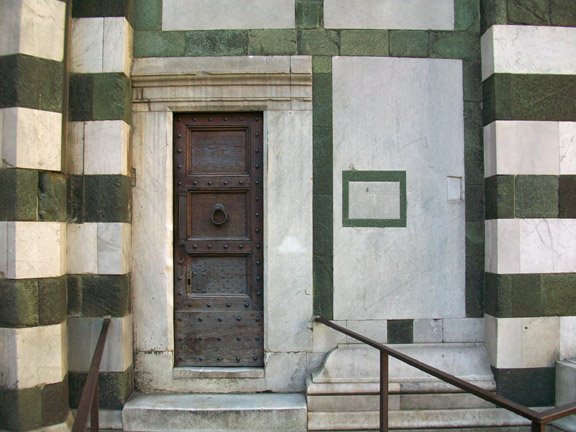This is the last of the posts from my residency in Florence. The Baptistry is sometimes the first and always the last place I go when I'm in Florence. The oldest building in the city, it is thought to have originally been a pagan temple, converted to Christian use in the 5th century. The building we see now was reconstructed in about 1050, then embellished over the next four centuries. The interior is an amazing amalgam of symbols and influences -- East/West, Pagan/Christian, Antiquity/Byzantium/Renaissance. The domed ceiling and other parts of the interior are covered with impressive 12th century gold-leaf mosaics in the Byzantine style. But I'm much more interested in the earlier stuff - the intarsia patterns and symbols based on natural forms and obviously derived from Pagan iconography that occupy the walls, upper niches, and the floor.






 The exterior of the Baptistry is also amazing. It is of course famous for the Ghiberti bronze doors on the north side -- all polished and shiny, they are constantly surrounded by a herd of tourists. But around each corner of the octagonal building is a remarkable set of niches and relations created by the distinctive green & white marble.
The exterior of the Baptistry is also amazing. It is of course famous for the Ghiberti bronze doors on the north side -- all polished and shiny, they are constantly surrounded by a herd of tourists. But around each corner of the octagonal building is a remarkable set of niches and relations created by the distinctive green & white marble.
 High on a hill overlooking Florence is another magnificent place, San Miniato Al Monte, completed in 1207 and formally influenced by the Baptistry. Here we see a large-scale improvisation on many of the elements that make the Baptistry such a special place.
High on a hill overlooking Florence is another magnificent place, San Miniato Al Monte, completed in 1207 and formally influenced by the Baptistry. Here we see a large-scale improvisation on many of the elements that make the Baptistry such a special place.










